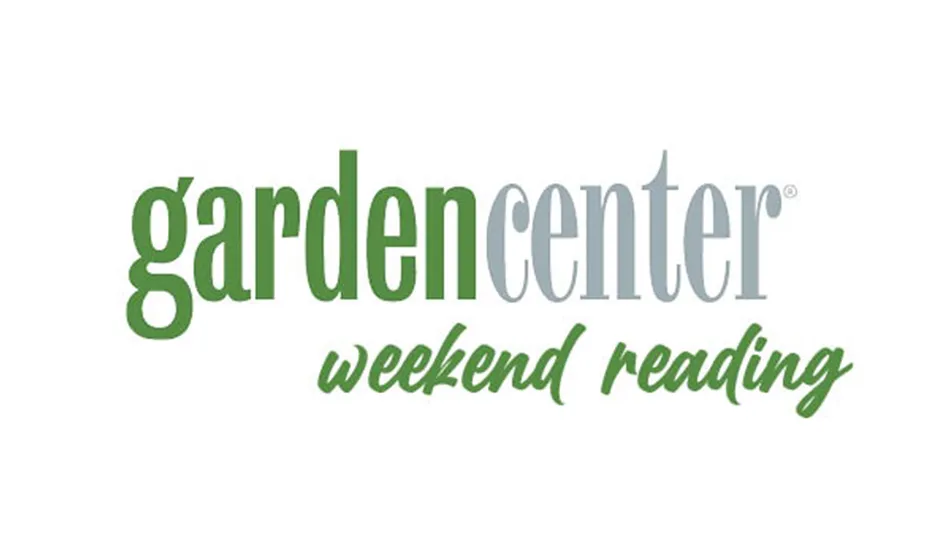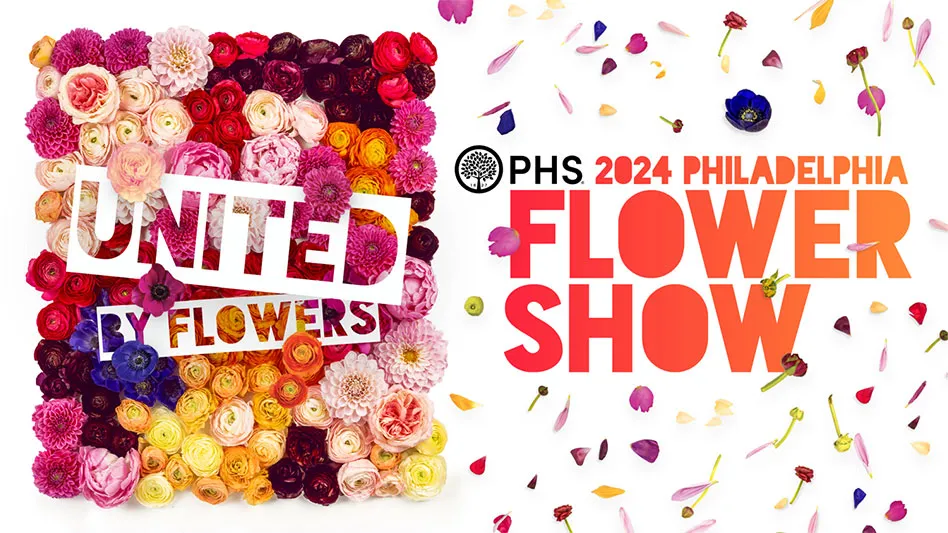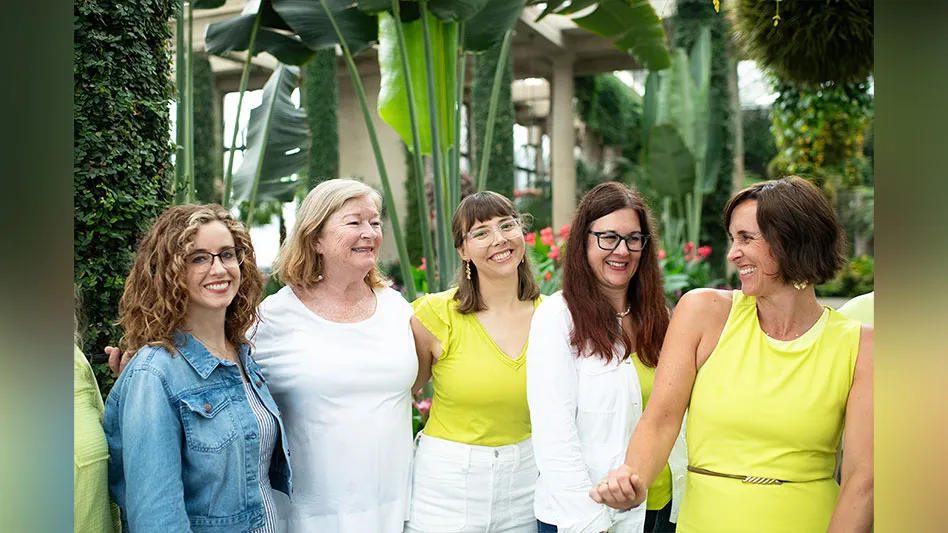
 Ask Lee Ganim of Ganim’s Garden Center about heirloom vegetable history and the independent garden center owner mentions Thomas Jefferson. Others look closer to today, but Connecticut-based Ganim makes his point. These plants go back long before the term “heirloom” became vogue. Thanks to celebrity chefs, local food advocates, anti-GMO activists and nostalgia-minded millennials, demand for heirlooms is converging on IGC doorsteps. Educating staff and customers can help position your IGC to meet the wave.
Ask Lee Ganim of Ganim’s Garden Center about heirloom vegetable history and the independent garden center owner mentions Thomas Jefferson. Others look closer to today, but Connecticut-based Ganim makes his point. These plants go back long before the term “heirloom” became vogue. Thanks to celebrity chefs, local food advocates, anti-GMO activists and nostalgia-minded millennials, demand for heirlooms is converging on IGC doorsteps. Educating staff and customers can help position your IGC to meet the wave.
Linking history with the name
When Garden Center magazine’s first issue hit IGCs 20 years ago, the phrase “heirloom plant” was novel. Family-preserved seeds had sparked interest, but only a few adventurous IGCs paid attention. In 1981, Seed Savers Exchange co-founder Kent Whealy — at the core of the seed preservation movement — thrust “heirloom” into the limelight during a speech. Whealy credits others with coining the idea, but living heirlooms struck a chord. Grassroots gardeners adopted the label and the heart behind it.
Seeds as precious to their keepers as faded antique photographs and family jewelry came forward. Stories about these horticultural heirlooms and the ancestors who preserved them came, too. The nearly lost inheritance warranted preservation, but the romance and nostalgia of the heirloom label helped win supporters. It would be years before “heirloom” spread to IGC vernacular, but when it did, the power wasn’t overlooked.
Pinning down a definition
Wayne Fisher of Good Earth Garden Center in Colorado Springs admits, “The definition of heirlooms has been a floating one.” Some growers opt for 100-year-old varieties and others include modern creations, but Fisher holds to time-honored definitions. The IGC offers scores of true-to-seed, open-pollinated tomato varieties unchanged for more than 50 years. “Soon-to-be heirlooms” appear on the roster as open-pollinated varieties unchanged for more than 30 years and headed for heirloom status.
Whatever the qualifiers, one basic remains — heirlooms come with histories all their own. Irresistible stories tell how 6,000 plants of Radiator Charlie’s Mortgage Lifter tomato, sold at a dollar each, paid off a 1930s mortgage, or how Ragged Jack kale, also known as Red Russian, slipped into Canada with Siberian traders before the 20th century. Tales teamed with taste captivate IGC customers drawn to plants passed through generations or carried across countries and seas.
Moving toward the tipping point
 Good Earth started offering heirloom tomatoes to differentiate themselves from the competition about 15 years ago. “Nobody was looking for them when we started,” Fisher recalls. When growers couldn’t provide heirlooms Fisher wanted, he started growing his own. Demand grew steadily and took off with the edible boom. One customer travels 120 miles as soon as heirlooms are released each spring. Armed with shopping lists from coworkers, the man buys 60 to 80 heirloom plants. “We would grow 200 varieties if we could, but we don’t have the room,” Fisher says.
Good Earth started offering heirloom tomatoes to differentiate themselves from the competition about 15 years ago. “Nobody was looking for them when we started,” Fisher recalls. When growers couldn’t provide heirlooms Fisher wanted, he started growing his own. Demand grew steadily and took off with the edible boom. One customer travels 120 miles as soon as heirlooms are released each spring. Armed with shopping lists from coworkers, the man buys 60 to 80 heirloom plants. “We would grow 200 varieties if we could, but we don’t have the room,” Fisher says.
At The Flower Bin Garden Center in Longmont, Colorado, its new 5,000-square-foot edibles house drew more customers asking specifically for heirlooms. Annual Greenhouse Manager Kim Jackson evaluated the intense demand and decided a revamp was in order. “I knew we had to do this and do it in a big way,” she explains. For the 2015 season, the IGC has at least one heirloom edible in every category, from lettuce and collards to eggplant and cantaloupe.
On the East Coast, Ganim offers dozens of heirloom tomato varieties along with several heirloom herbs. He credits various motivators for demand. Some shoppers want the historical connection, others want the taste TV chefs tout, and others want to avoid GMOs. It’s not about saving heirloom varieties; shoppers let others do that work. “Consumers are being trained to understand these odd-looking tomatoes and other vegetables serve up better taste,” says Ganim.
Overcoming hurdles through grafted heirlooms
With little or no genetic resistance to most soilborne diseases, heirloom vegetables can trouble consumers and produce growers in some regions. Heirlooms grafted onto disease-resistant rootstock provide one solution, but some growers and IGCs question productivity claims. North Carolina State University’s Dr. Frank Louws shines light on grafting realities. “There’s lots of room to continue to educate the public,” says Louws, who is director of the multistate Specialty Crops Research Grant on Grafting Fruiting Vegetables.
“The most important thing grafting has to offer growers is the ability to grow roots suited to your land,” Dr. Louws advises. IGCs incorporating grafted heirlooms should seek rootstock resistant to their area’s soilborne diseases. In the Southeast, where bacterial wilt rules out standard heirloom tomato production, grafted plants restore land and growers to productivity. For home gardeners, grafted plants can flourish where heirlooms otherwise would die.
Regarding higher yields, Dr. Louws cautions that grafted heirlooms may not outperform non-grafted plants without soilborne disease. “You can grow plants bigger than what you’re used to and potentially see higher yields, but that’s not always true,” he explains. Though grafts enhance high vigor in plants, reasons why are still unclear. Dr. Louws also points out that if an heirloom would have died due to soilborne disease, and it now continues to live, grow and produce disease-free, yields are boosted. “The longer a plant survives, the bigger the yields,” he responds.
Capitalizing on heirloom trends
 To get your heirloom offerings in shape, start in your own greenhouse. You may discover, as Jackson did, you’re already growing heirloom vegetables and missing the marketing segment. Well-known varieties such as Long Island Brussels sprouts, Lacinato kale, Brandywine tomato and Bull’s Blood beets were standards before “heirlooms” arrived, but they’re heirlooms just the same.
To get your heirloom offerings in shape, start in your own greenhouse. You may discover, as Jackson did, you’re already growing heirloom vegetables and missing the marketing segment. Well-known varieties such as Long Island Brussels sprouts, Lacinato kale, Brandywine tomato and Bull’s Blood beets were standards before “heirlooms” arrived, but they’re heirlooms just the same.
Expanding may stretch your traditional sources. Many growers and seed houses don’t offer heirloom varieties or have prohibitive pricing. Good Earth works with Seed Savers and TomatoFest Heirloom Tomato Seeds, and the IGC saves their own seed for heirlooms unavailable through other sources. TomatoFest’s Gary Ibsen welcomes growers seeking commercial quantities of heirloom tomato seed, including rare and unusual varieties, but other categories may be challenging. Jackson believes commercial seed houses will change perspectives and pricing structures as heirloom interest increases.
Events and education for consumers and staff
Sharing knowledge is essential to heirloom and hybrid edible success. Clarifying modern confusion is also critical. Jackson reports the greatest heirloom interest among 25- to 35-year-olds, but not always for nostalgic reasons. Many equate hybrids with GMOs and see heirlooms as the only alternative. Ganim hears the same. “We tell our customers there’s no GMO or GE here, just OMG – Oh, my God, these are good!” Ganim doesn’t see heirlooms slowing. “If anyone wants to upgrade their business, they need to get in on heirlooms. Get more educated and educate their staff,” he suggests.
 Curiosity converts to sales when customers experience what they’ve missed. Gary Ibsen has been helping people discover heirlooms since one bite won him over more than 30 years ago. What started as a backyard harvest party in 1991 grew into Carmel TomatoFest, with 3,000 annual attendees by its final year in 2008. Fisher thinks IGCs would be wise to follow Ibsen’s lead. “The first time I saw a black tomato,” he shares, “I thought, ‘Who would want to eat a black tomato?’ Then you taste it, and you’ll never plant a garden without one.”
Curiosity converts to sales when customers experience what they’ve missed. Gary Ibsen has been helping people discover heirlooms since one bite won him over more than 30 years ago. What started as a backyard harvest party in 1991 grew into Carmel TomatoFest, with 3,000 annual attendees by its final year in 2008. Fisher thinks IGCs would be wise to follow Ibsen’s lead. “The first time I saw a black tomato,” he shares, “I thought, ‘Who would want to eat a black tomato?’ Then you taste it, and you’ll never plant a garden without one.”
For IGC owners and staff interested in learning more about heirloom vegetables and seeds, Seed Savers Exchange, seedsaversexchange.org and TomatoFest Heirloom Tomato Seeds, www.tomatofest.com provide valuable resources. Look to the Vegetable Grafting Research-Based Information Portal at graftvegetables.org for the latest advances in vegetable grafting research.
Jolene Hansen is a freelance writer and former hort professional quietly reshaping the way people experience gardens and gardening.

Explore the February 2015 Issue
Check out more from this issue and find you next story to read.
Latest from Garden Center
- Weekend Reading 5/17/24
- GardenComm 2024 Annual Conference registration is open
- Landmark Plastic celebrates 40 years
- Proven Winners introduces more than 100 new varieties for 2025
- Weekend Reading 5/10/24
- The Family Business, Part 2: Agreeing (and disagreeing) on capital investments
- Registration opens for Darwin Perennials Day
- Weekend Reading 5/3/24





